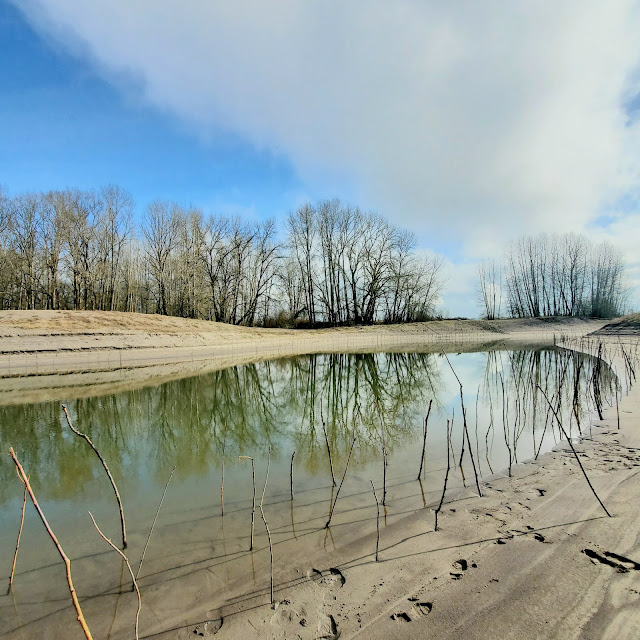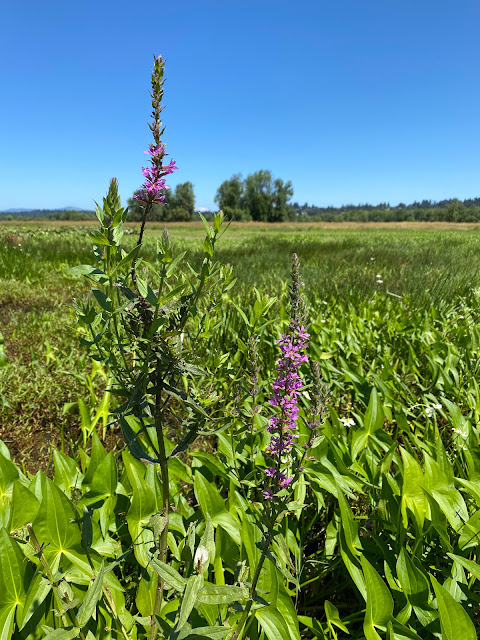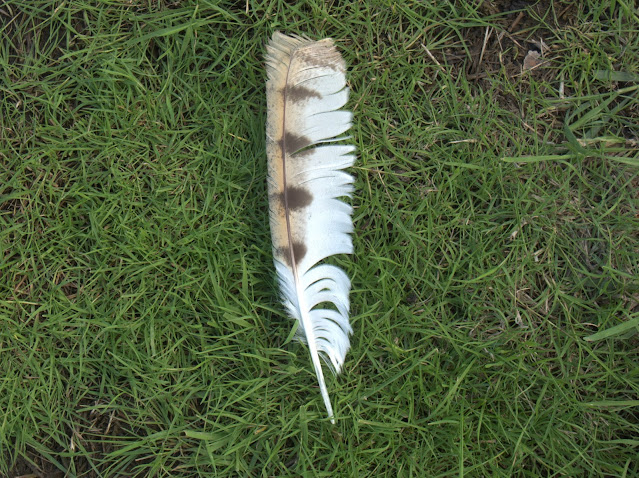March 18, 2021 - Turtle Lake (Part II)
On Thursday, March 18, 2021, we officially reached 6,000 willows planted at Turtle Lake! We are so excited to be finished with such a massive planting effort - which was no small feat for our Habitat Restoration Crew. Due to COVID restrictions and terrible dike-road conditions on the way out to Turtle Lake - our volunteer base for this project was rather small. Besides Keith and I, we had a total of 6 volunteers make it out to plant during the span of this project. With a small volunteer group, and the limitations we faced with the February snow storm and high water levels, we were worried that we would not be able to plant all of the 6,000 trees in the assigned time frame (by the end of March). Thankfully, the time frame for this project was extended, but surprisingly, we were able to finish planting by the third week of March because of the work of our dedicated volunteers and determined staff!
*To ensure proper COVID protocol, volunteers came out during designated time slots and were scheduled for solo-person work parties with either Keith or I being present as supervisor. There was a limit of one supervisor and one volunteer for each side of the channel.*
 |
An image of the reconstructed channel from the south side. Keep scrolling to find out how we traveled across the channel each day. |
 |
An image of the willows captured from the mouth of the channel that feeds directly into the Columbia River. How Did we Plant the Willows? Each person that planted out at Turtle Lake had a slightly different method for planting the willow stakes. Most people utilized a planter pole, and worked below the water line. With a willow in one hand, and the planter pole in the other, you could shimmy the willow stake into the soft sand. Once the willow got stuck and wouldn't go deeper, the planter pole could be used to soften the sand and push the willow in. On each side of the channel, we planted between the 9 and 12 foot elevation lines relative to the bottom of slough. We aimed for a distance of 3 feet between each willow planted, and for each willow to be planted at a depth of 2 or more feet. In the drier areas of sand, individuals used either a planter pole or shovel to create a hole for the willows to be planted in. Due to the fact that the channel sediments are composed mainly of historical Columbia River dredge spoils - methods for planting the willow stakes varied greatly depending on the composition of the sediment in a particular area. Sometimes the sand would be so soft that you could just shove a willow stake in without the use of a tool, and other times, the sand would be so compacted that even using a shovel to plant was difficult. *For a refresher on background information and reasoning behind this project, view blog post - Turtle Lake (Part I)* |
 |
Dave Phelps, Friends of Ridgefield NWR Habitat Volunteer, walking through his newly planted patch of forest. He was able to come in for willow cutting, processing, and planting during the last week of the project, and was an immense help! |
 |
Here you can see Keith traveling back to the north side of the channel in the Argo. What a cool way to get around! |
 |
By the time that we reached about 5,000 trees planted - we ran out of the pre-cut willow stakes that were stored at WDFW Headquarters in Ridgefield, WA. We ended up taking over 1,000 willow stakes from various locations all over Ridgefield NWR. The snow that we had back in February helped us with this process. We drove around and looked for willow stands that had branches that were knocked down by the heavy snow. |
Is the Project Really Over?
*Stay tuned for more updates on this project*






Fabulous article!!! Great work!!
ReplyDelete